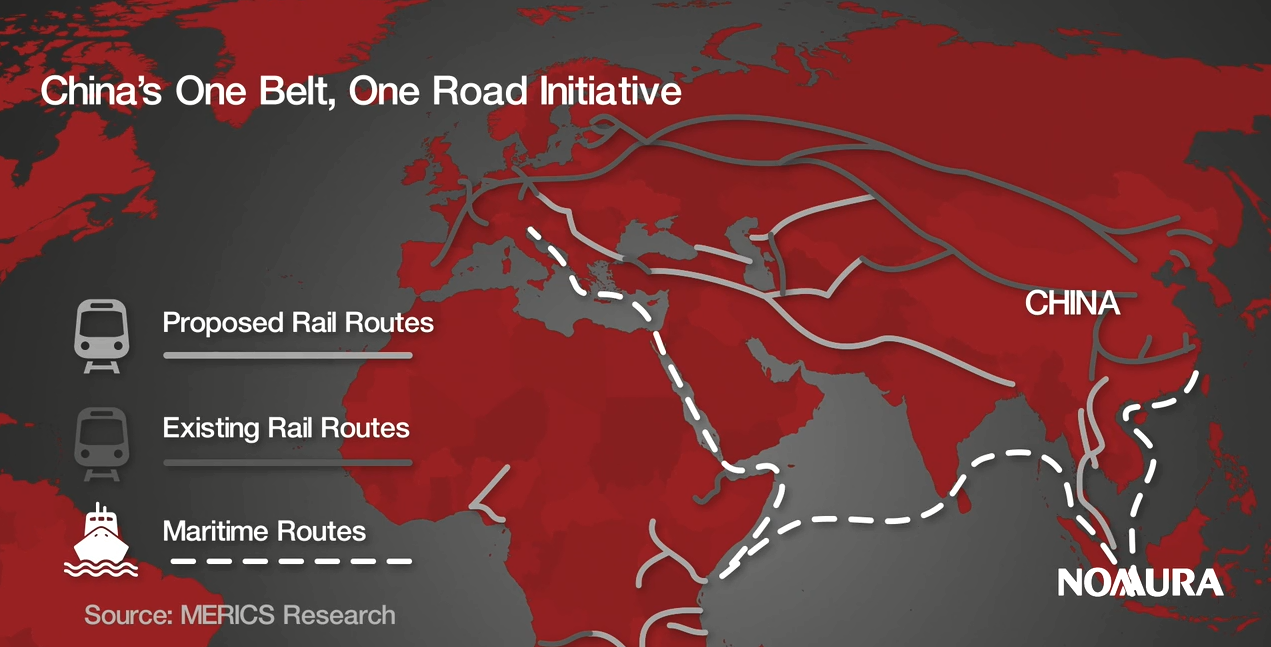What is fuelling trade in global emerging markets?
- Despite the risk of a trade war, EM countries remain committed to globalization and free trade.
- China is leading the way with the Belt and Road Initiative, which will significantly expand its market reach.
- Important trade treaties remain under negotiation, including NAFTA and a new version of the Transpacific Partnership.
Trade has played a critical role in the development of emerging market (EM) countries. But as we discuss in our video, the increase in protectionist rhetoric in recent years threatens to stall or even reverse globalization. How will EM countries cope?
The good news is that many major emerging market countries are growing much faster than the developed world. They have prospered as a result of globalization and trade and – in the main – are committed to their continuation.
China, which is already the world’s second-largest economy, has set out ambitious plans to enhance its role in the world. The Belt and Road Initiative – also known as One Belt One Road – essentially replicates China’s ancient Silk Road routes but with modern technology and infrastructure. It will enable China to expand its export markets and take part in projects far from its domestic market. At the same time intra-regional trading in Southeast Asia is rapidly increasing.
Elsewhere in the world emerging markets face both risks and opportunities. In Turkey, for example, the continuing stress in its relationships with both the EU and the US may have macro-economic implications given that they are the country’s main sources of financing. Meanwhile, South Africa is rapidly overturning its reputation as a commodity focused economy; in reality it is already a major exporter of manufactured goods – and legal and professional services are some of its fastest growing sectors.
We believe these emerging market trends are an important counterbalance to concerns about protectionism. It’s also important to remember that many important trade treaties remain under negotiation, including NAFTA and a new version of the Transpacific Partnership (which no longer includes the US.) Perhaps most importantly, while 60% of the world’s trade flows used to come from developed markets in the 1990s, now it’s just 30%. And EM trade flows, which used to account for 6% of global trade now represents 30%. Emerging markets therefore represent the future of trade – and to a large extent that’s reassuring.
Featured experts:
Euben Paracuelles, Senior ASEAN Economist
Inan Demir, Senior Emerging Markets Economist
Jez Mohideen, Global, Chief Digital Officer, Wholesale
Relevant report:
Global EM 2018 outlook: Enjoy the party but stay close to the door
Disclaimer
This content has been prepared by Nomura solely for information purposes, and is not an offer to buy or sell or provide (as the case may be) or a solicitation of an offer to buy or sell or enter into any agreement with respect to any security, product, service (including but not limited to investment advisory services) or investment. The opinions expressed in the content do not constitute investment advice and independent advice should be sought where appropriate.The content contains general information only and does not take into account the individual objectives, financial situation or needs of a person. All information, opinions and estimates expressed in the content are current as of the date of publication, are subject to change without notice, and may become outdated over time. To the extent that any materials or investment services on or referred to in the content are construed to be regulated activities under the local laws of any jurisdiction and are made available to persons resident in such jurisdiction, they shall only be made available through appropriately licenced Nomura entities in that jurisdiction or otherwise through Nomura entities that are exempt from applicable licensing and regulatory requirements in that jurisdiction. For more information please go to https://www.nomuraholdings.com/policy/terms.html.
